How To Create a Profile in Outlook 2016 for Windows
Use the following steps to add a new Outlook profile to your Windows computer, and/or remove an old Outlook profile.
Recently Microsoft has kept things fun by hiding the Mail icon from Control Panel. Instead of finding what we need in Control Panel as we always have for the past 20 years or so, now we need to look within Outlook. With Outlook running, Click the File menu, then the Account Settings button to reveal the drop down list of different Account Settings choices. Way down that list will be the option to manage Outlook profiles. That's what we want to do, manage the Outlook profiles on the machine. If you find the mail setup dialog this way, skip the part about Control Panel below and jump to the screen shot like what you see on your machine.
Otherwise if you have the traditionally installed version of Outlook, manage Outlook profiles through Control Panel as follows:
Close Outlook if it's open.
Open Control Panel as follows:
In Windows 7 and earlier, click the start button and find Control Panel listed there.
In Windows 8, right click in the lower left corner of the desktop and choose Control Panel from the pop-up menu.
In Windows 8.1, right click on the start button and choose Control Panel from the pop-up menu.
In Windows 10, right click the start button and choose Settings, then search Settings for "Control Panel" and open Control Panel.
Type mail in the search box at the upper right corner of the Control Panel window to find the elusive Mail icon. See screen shot below.
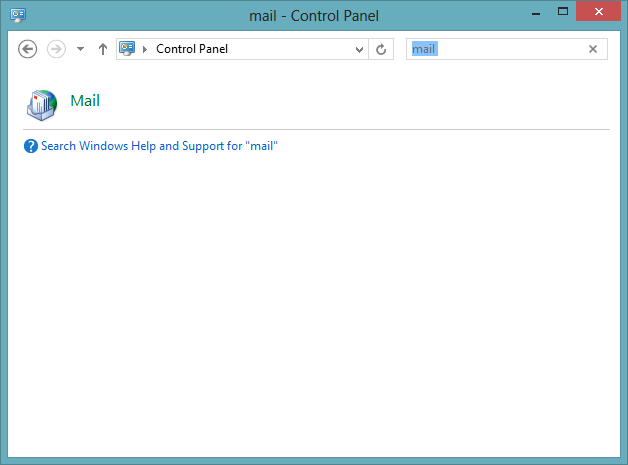
Open the mail icon. If profiles already exist on the computer, the mail setup dialog shown below will appear. If no profiles exist, you'll skip this step and the next dialog will appear, skipping this one.
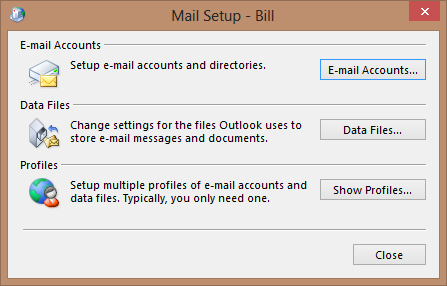
If the mail setup dialog appears, click the Show Profiles button. The dialog shown below will appear. The profiles shown on your computer and their names will be different from those in the screen shot.
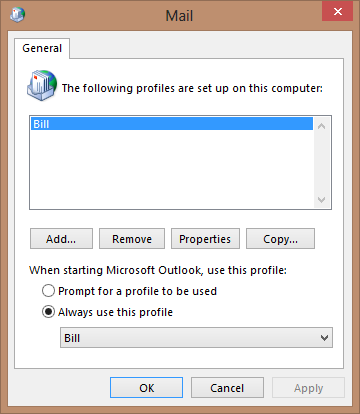
Click the Add button. The following dialog will appear.
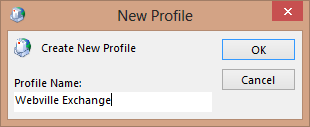
Type a name for the new profile and press Enter or click Ok. The name is only a description and can be anything you like, to help you identify this particular profile.
The following dialog will finally be revealed. The name and email address may already be filled in, and they will most assuredly be incorrect.
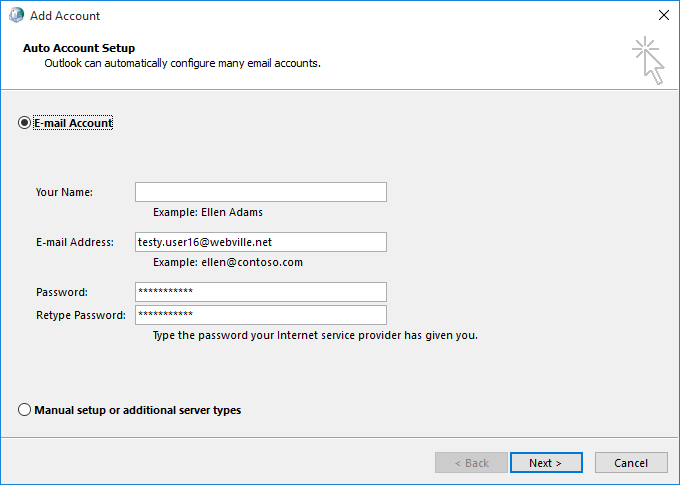
Type the email address and password for the account you're setting up, the values we supplied you. Click Next. Wait while Outlook attempts to locate the necessary settings and configure your account automatically. This may take a minute. You may be presented with a credentials dialog and a security dialog, like those shown below.
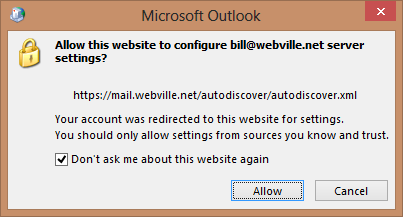
If the security dialog refers to https://mail.webville.net/autodiscover/autodiscover.xml like the screen shot, then check the box "Don't ask me about this website again" and click the Allow button. (If the dialog refers to some other website address, your email address domain is not configured properly for hosting by Webville and you'll need to cancel and get help.
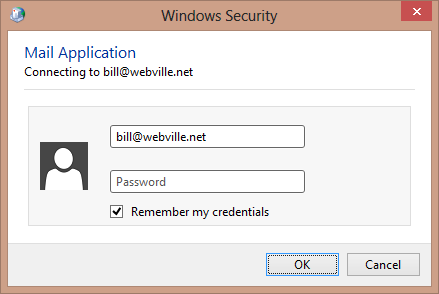
At the (Windows Security) credentials dialog shown above, type your login and password. Login is usually the same as email address and is always in the user@domain (dot something) format. If you check the box "Remember my credentials" Outlook will launch into your email without stopping to ask for your password. This may or may not be the behavior you desire, depending on whether other people use your computer.
The dialog shown below will appear and your account is almost ready for use.
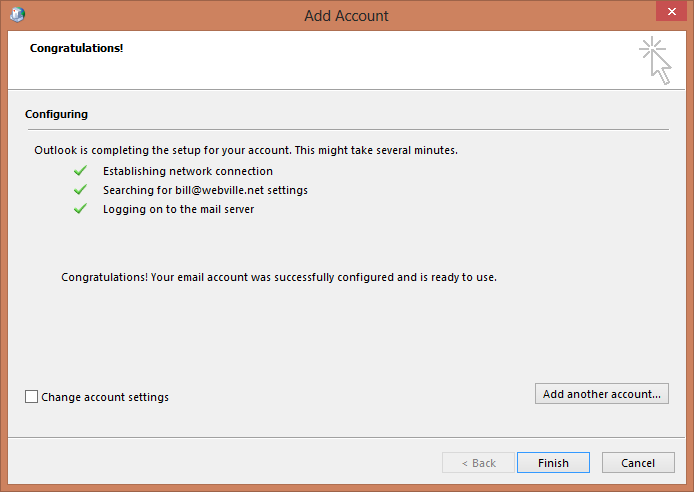
Click Finish but you may not be quite finished yet.
The Mail Profiles dialog will still be open (as shown below) and will show the new profile, along with any others which already existed. If other profiles exist, you'll need to tell Outlook which profile to use.
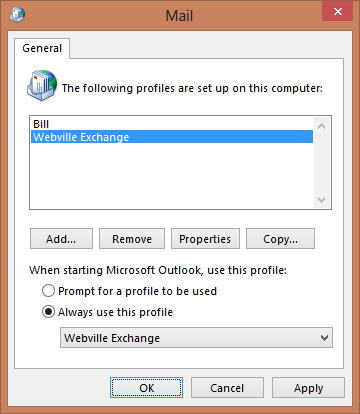
Click the drop down under Always use this profile, and select the new profile from the drop down list, as shown in the screen shot above. Click Ok, close Control Panel and now you're ready to start Outlook.
Enter your username & password if prompted. You're all set.
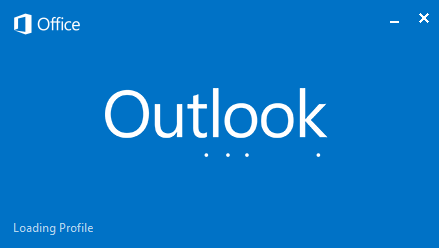
If you have trouble with these instructions, or comments about how to make this page more useful to other clients, please let us know.
